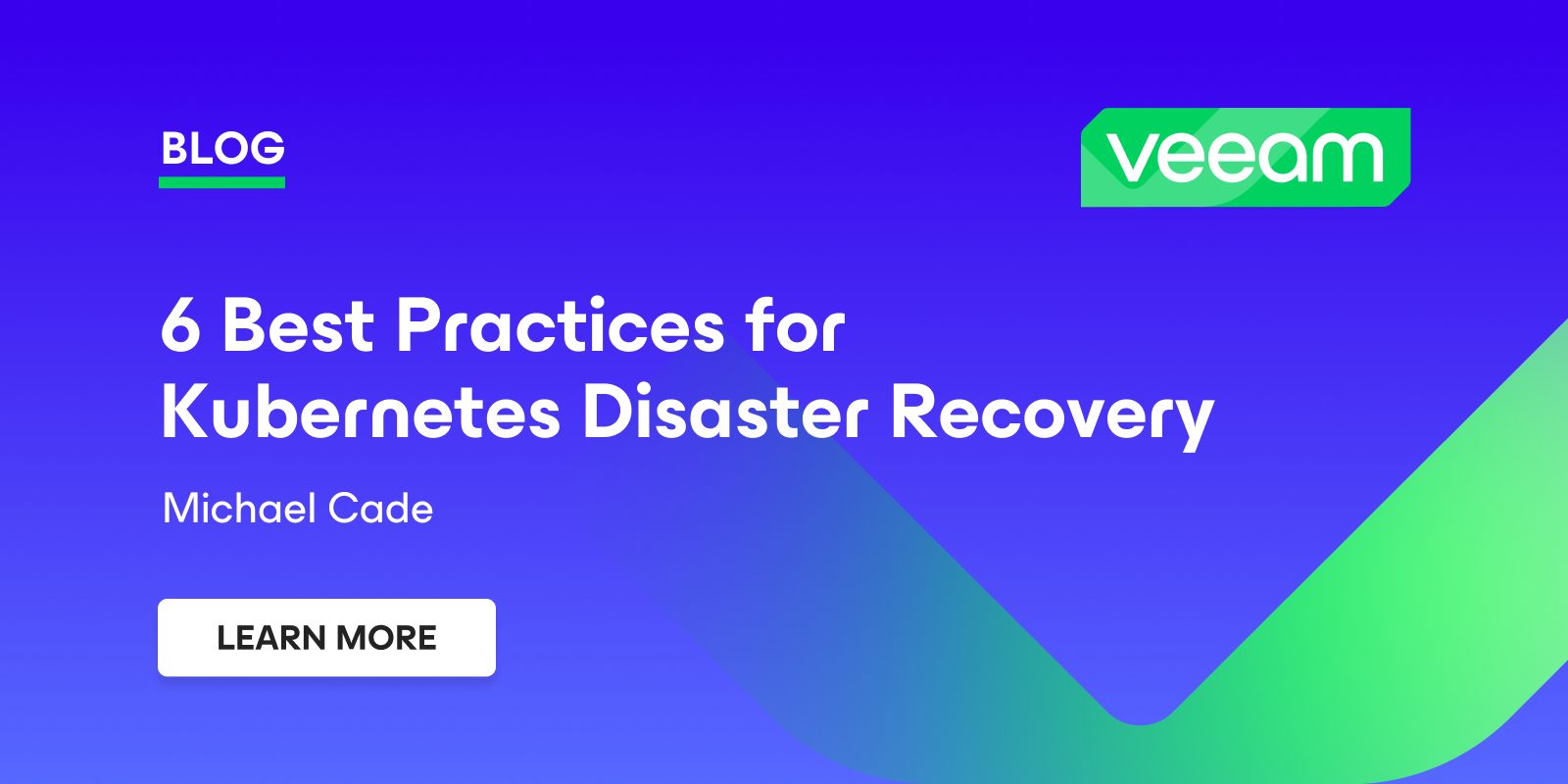
6 Best Practices for Kubernetes Disaster Recovery

Kubernetes adoption is accelerating as businesses become familiar with its many benefits. The platform offers portability and scalability, cost efficiency and productivity gains, which is why more than 5.6 billion developers use it today. Unfortunately, cyber-attacks and the potential for downtime are very real risks for cloud native environments, so backup and disaster recovery (DR) are critical components of any Kubernetes environment. This is especially true as the number of stateful applications such as databases are being deployed in Kubernetes.
But cloud native applications have unique requirements which makes backup and recovery a bit more challenging. When devising your DR strategy for Kubernetes, here are 6 best practices to keep in mind:
1. Go Native
Traditional data management doesn’t meet the needs of a cloud native architecture, so it’s best to choose a DR solution that’s purpose-built for Kubernetes. A cloud-native solution takes into consideration the various interdependencies between microservices and is designed to recover all data, components and resources associated with an application. It also captures the application’s entire state to minimize the risk of data loss or corruption.
2. Have a Plan
Know in advance where you’ll be storing your backups, and whether you’ll use manual backup procedures or automated tools to reduce human error. Document your DR strategy, including when to use it and where applications will be restored. Having a clear roadmap to follow will eliminate confusion and speed time to recovery in case of a disaster.
3. Leverage Automation
Although the number of Kubernetes applications continues to expand, the cloud-native talent pool is still relatively small. Automation can bridge the gap and help to ensure that you recover your application components in the right order, starting with components that support the database and security, followed by clusters and data in persistent volumes, and finally moving to the microservices that render the application.
4. Use Application-Aware Backups
Kubernetes is portable – but this creates problems when it comes to backup and DR. While the platform’s portability makes it easy to build new applications and migrate them to different environments, workloads are stateless. A solution that is application-aware (or application-consistent) will capture all of the data in memory and in-process transitions, and back up the application in a consistent state, thereby making it immediately available upon recovery.
5. Secure Your Backups
Don’t skimp on backup security – they’re also targets for hackers. Use identity-access management and role-based access control (RBAC) so that only people assigned to monitor backups have access rights. Data encryption is equally important, to ward off potential attacks or breaches. If you’re unsure about how to best secure your backups, refer to best practices from the Cybersecurity and Infrastructure Security Agency (CISA), which include network separation, authentication and authorization.
6. Make It Repeatable & Flexible
To be reliable, your DR strategy must be repeatable. Automated solutions help to create consistency while minimizing errors and establishing a repeatable process that can be easily communicated and understood, which makes training easier and helps to ensure disaster preparedness. Kubernetes distributions may be running on different hardware with different underlying infrastructure, and a large enterprise may be using a combination of databases, clouds and on-premises equipment. That’s why your DR solution should be database-agnostic. In addition, be ready to modify your DR strategy as your requirements and initiatives evolve. Be sure to review and update your plan often – and document everything!
Be Ready When Disaster Strikes
Downtime and cybercrime are prevalent in today’s highly digital world, so it’s smart to be prepared for the worst. Following these best practices for creating a solid DR strategy can help to mitigate downtime and protect mission-critical data, while reducing administrative overhead for your DevOps team. Choosing the right tools to automate the process is also critical.
As the leading backup and DR solution for Kubernetes, Kasten K10 by Veeam enables granular restores to a specific, predetermined location. You can use Kasten K10 to clone applications into the same namespace or a new one, or restore only a subset of the application, for example, the data volume. Users can achieve near-zero RTO for Kuberenetes workloads by automatically replicating a complete application stack to a standby cluster. Kasten K10 allows for fast failover across cloud regions, cloud providers, or between on-premises and public cloud infrastructure.
For a deep-dive into managing data in Kubernetes, download the free Kubernetes Backup & Recovery For Dummies ebook. Also, try Kasten K10 for free.
